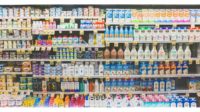Consumers’ quest for convenience to drive flexible packaging growth
Shifts in consumer lifestyles and the consequent demand for convenience products, are contributing to a growing use of flexible packaging, replacing traditional formats, such as glass jars and metal cans.
Smithers Pira’s (smitherspira.com) latest report, “The Future of Flexible Packaging to 2022” forecasts this market will grow during 2017-2022 at annual rate of 4.1% to 33.5 million tonnes. Global consumer flexible packaging consumption amounts to 27.4 million tonnes in 2017 and total flexible packaging sales (consumer and industrial) are valued at $229 billion in 2017 and are forecast to grow to $282.6 billion by 2022.
Smithers’ analysis includes insight into which market segments and regions will see the strongest growth, the trends driving market expansion, and how individual firms can best position themselves to effectively leverage these opportunities.
“Flexible packaging offers several advantages compared to rigid pack formats, including extended shelf life, improved cost economics, lower pack weight and freight cost savings. Multilayer flexible packaging solutions, including metallised film, are being adopted across many different end-use sectors,” says David Platt, author of the report.
“Retort foods and pharmaceuticals packaging are growing markets, for example for PET-based transparent deposition films, while high-barrier films are used in case-ready and modified atmosphere packaging. Growing demand from the major retailers for an extended shelf life and from consumers for convenience products are driving sales of barrier packaging films. Other key trends include the growing use of sustainable packaging based on biodegradable polymers, bio-derived materials and recycled plastics, and down gauging films for cost reduction.”
Smithers’ comprehensive analysis segments this industry by flexible substrate; end-use application; geographic and key national markets.
This shows how technology developments are also supporting the growth of flexible packaging. Pouches, particularly stand-up pouches, are the fastest-growing product category in the flexible packaging market. Pouch equipment manufacturers are delivering machinery capable of faster production speeds, greater versatility and improved sealing techniques, which improves the competitive position of pouches versus alternative pack formats.
Converters continue to develop novel products, thus opening up new retail opportunities for flexible packaging substrates. Different functionalities and creatively shaped pouch packages, for example, offer a differentiation that enables a product to stand out on the shelf.
Flexible packaging demand, like most other markets, is influenced by the economic cycle. The outlook for flexible packaging market growth is likely to be negatively influenced by an expectation of moderate global economic growth during the five-year period to 2022. Emerging and developing economies are forecast to grow at twice the rate of advanced countries and offer the best prospects for flexible packaging market growth.
Looking for a reprint of this article?
From high-res PDFs to custom plaques, order your copy today!




